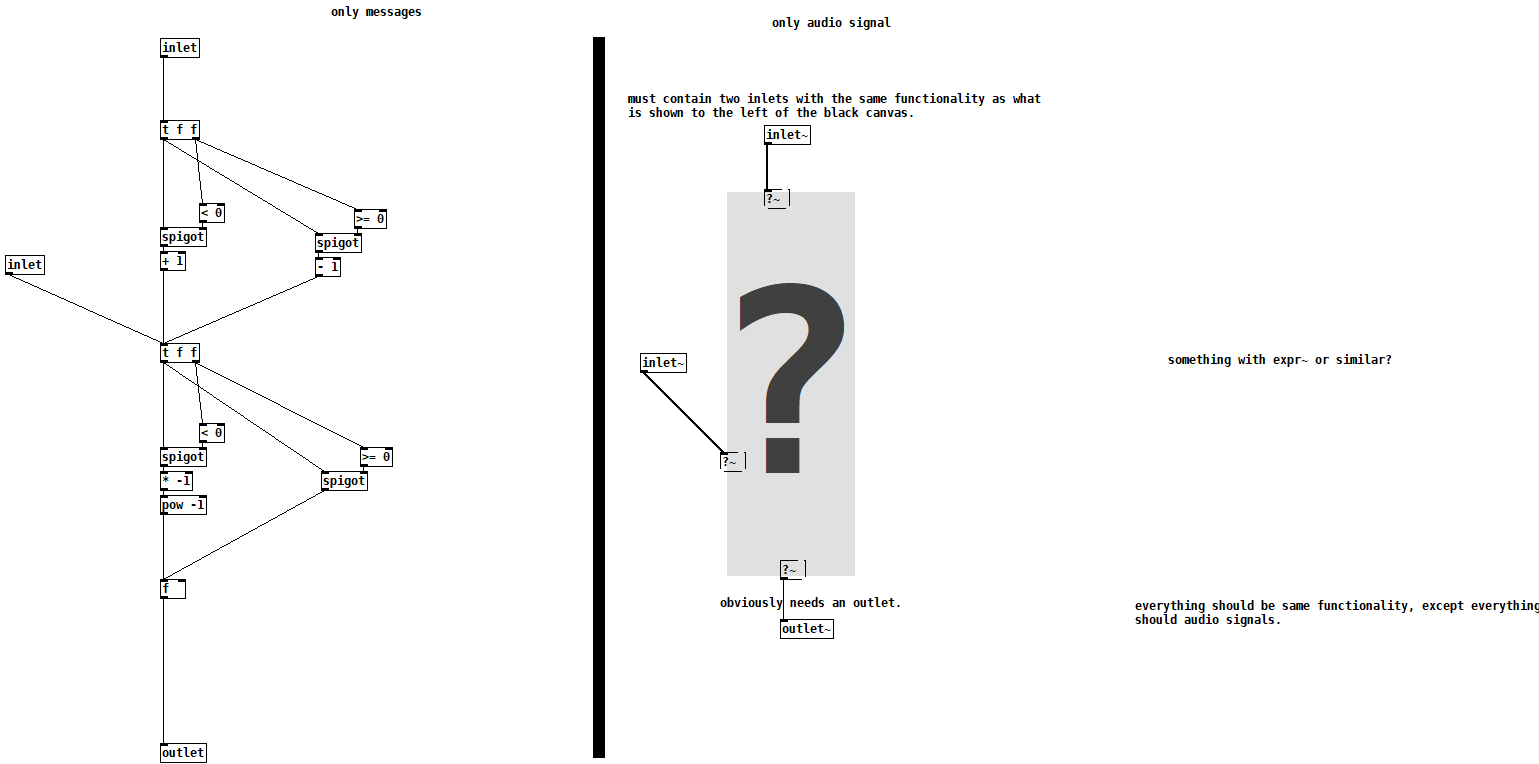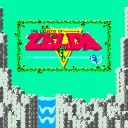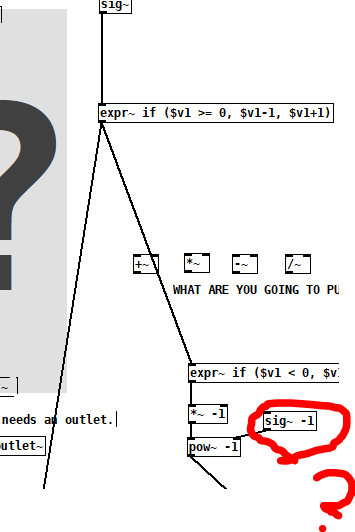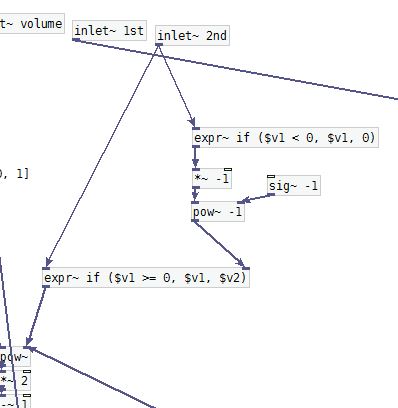@4ZZ4 [t f b] sends a bang and then the float every time a float is received.
But an audio signal is arriving constantly..... 44100ish times a second, so no.
[bang~] will send a bang (control bang) every 64 samples....... and can send a bang every sample if it is in a subpatch with a [block 1] in it as well.
You might be wanting to send a float at a given signal value in which case [threshold~]
But what are you trying to achieve?
I ask about multiply etc. because in your original control rate patch you have [t f f]
Either the result of the top half is sent on, or the float from the left inlet.
But with signals they are both arriving at the same time and it cannot be one or the other.
How do you decide which one?
If you only occasionally have signals arriving at each inlet..... and at different times I suppose you could automatically switch between them.
If the top part goes to zero you could test for that and kill the input to where the trigger is, and then use [+~] in place of the trigger.
Audio is not at all the same as control signals. Although it is still numbers it is a constant stream of them.
I suppose it would be possible to interleave the samples (switching between the top and side inputs)....... but at what rate? And the output will be a mess.
So the question is...... what do you want the final output to represent..... what is the relationship between the two inputs and how should they be combined?
David.






 , with only taking into account this part:
, with only taking into account this part:  i want it to be audio-only as last time.
i want it to be audio-only as last time.